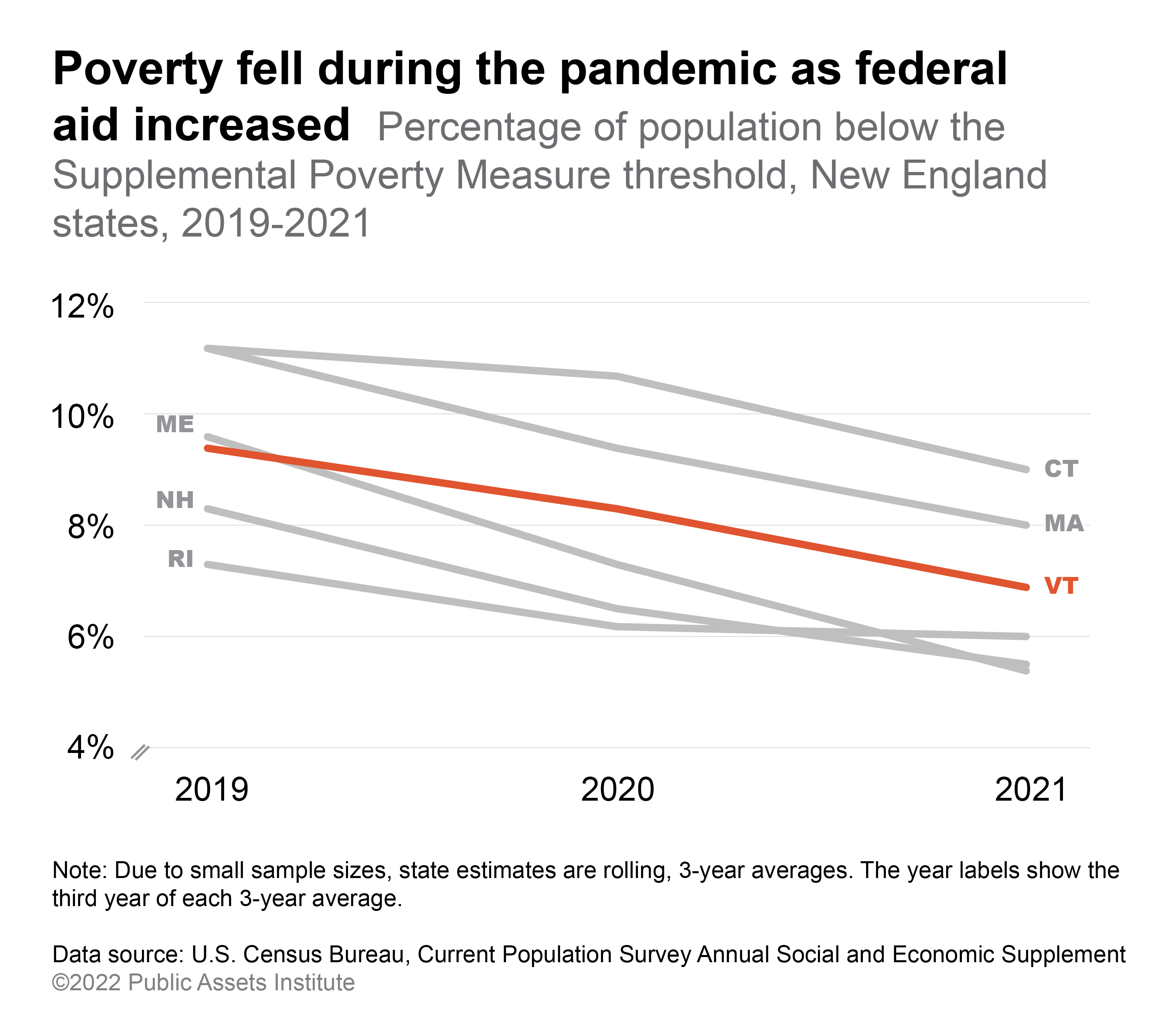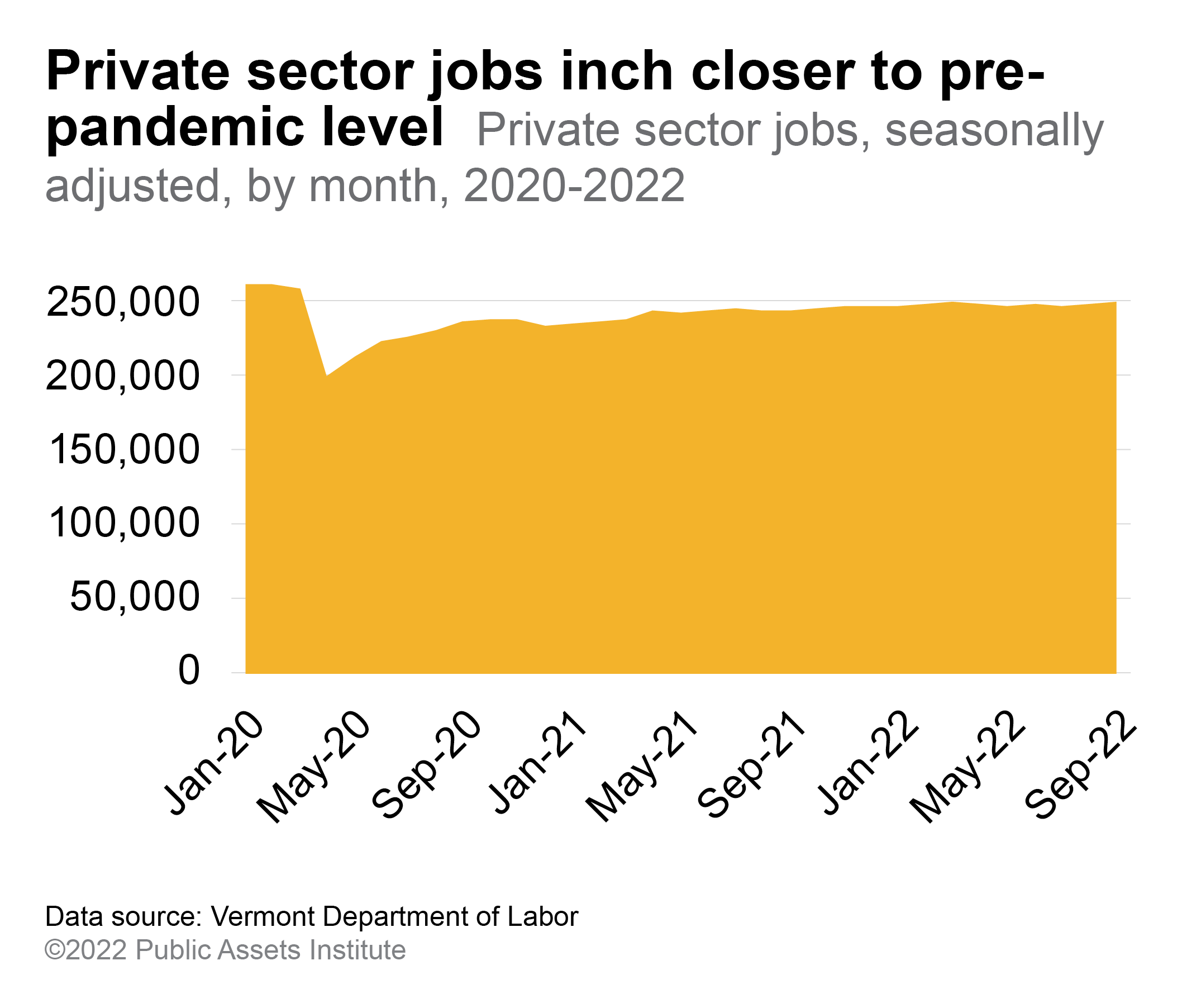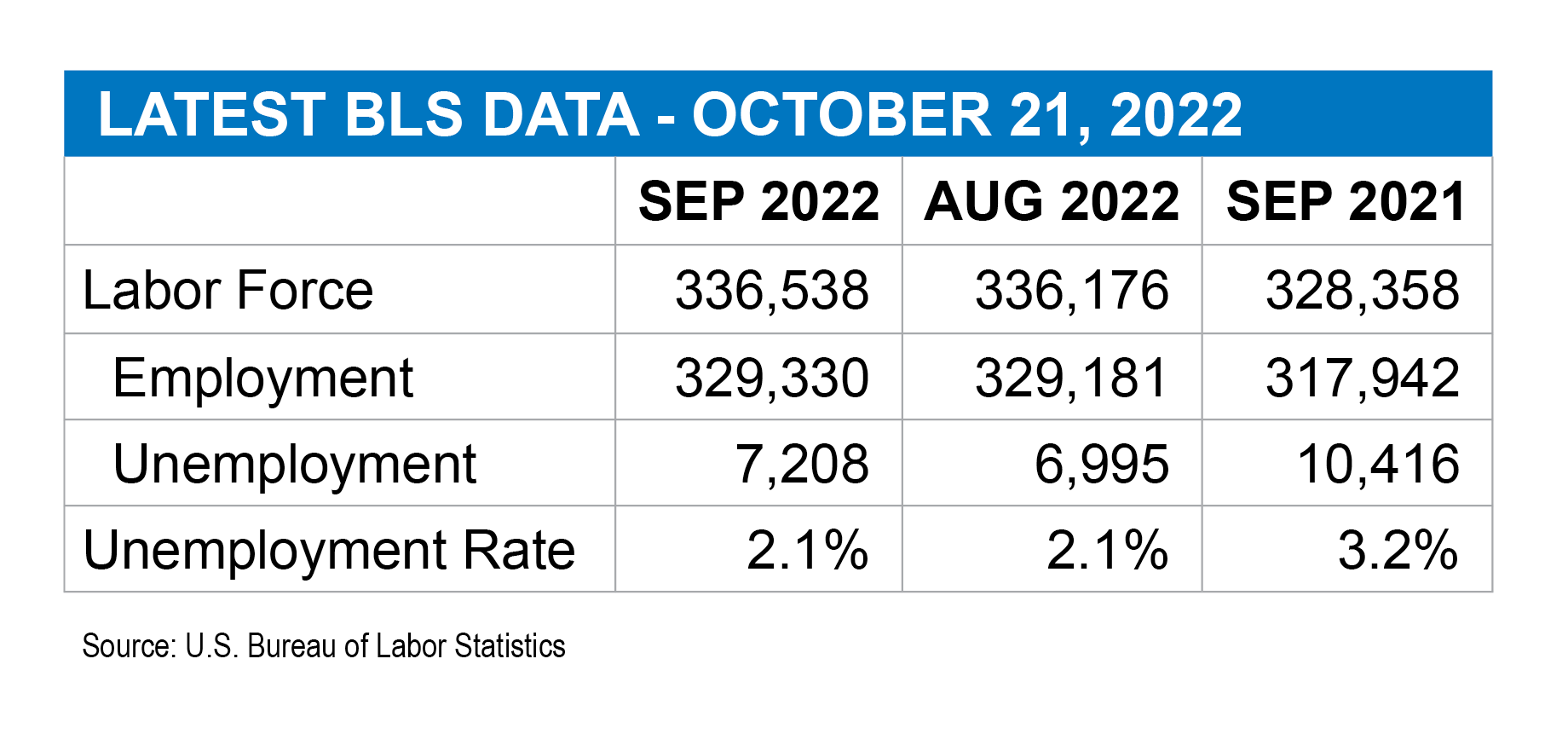Jobs are creeping back—and child poverty is too
 Despite a national pandemic, poverty fell in Vermont, New England, and the nation in 2020 and 2021. Vermont’s supplemental poverty rate dropped to just below 7 percent; approximately 14,000 fewer Vermonters were living in poverty in 2021 than in 2019.
Despite a national pandemic, poverty fell in Vermont, New England, and the nation in 2020 and 2021. Vermont’s supplemental poverty rate dropped to just below 7 percent; approximately 14,000 fewer Vermonters were living in poverty in 2021 than in 2019.
The Supplemental Poverty Measure (SPM) defines income and need differently from the official measure—and more realistically. The SPM factors in cash income as well as non-cash benefits and variable expenses including taxes, child care, and medical care. SPM poverty thresholds are generally higher and based on the cost of food, clothing, shelter, and utilities. The official measure counts only cash income, and need is based only on the cost of food.
Government benefits during the pandemic—stimulus payments and expansion of the Earned Income Tax Credit (EITC), Child Tax Credit (CTC), and Supplemental Nutritional Assistance Program (SNAP)—helped lower the supplemental poverty rate. Under the official poverty measure, those benefits weren’t counted as income.
While Vermont numbers are not available, child poverty dropped nationally to a record low in 2021. Almost 3 million children were lifted out of poverty by the expanded CTC. However, Congress allowed it to lapse, and these children, including those in Vermont, are falling back into poverty.
Private sector jobs edged up in September to 248,200, the highest number since April 2020 but still about 4 percent fewer than before the pandemic. Nationally, private sector jobs reached the pre-pandemic level in May of this year.


